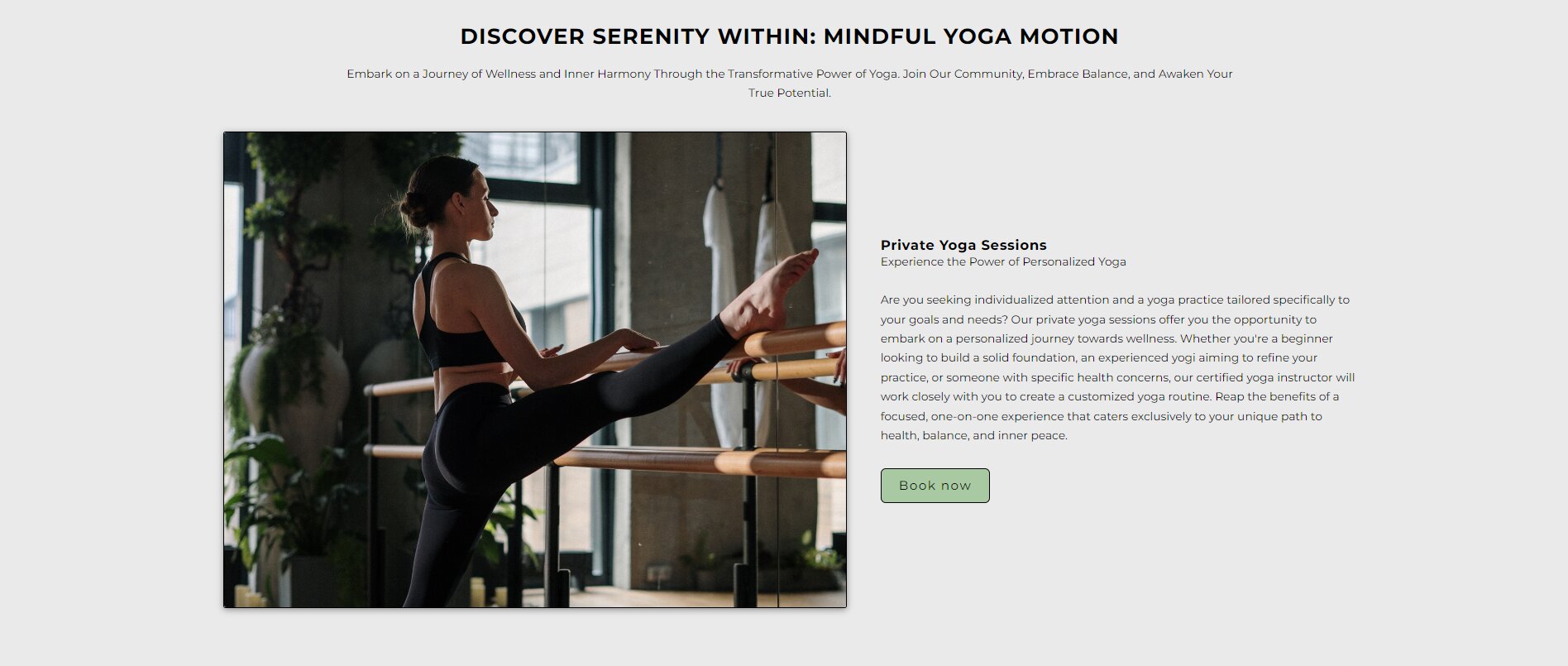In recent years, the popularity of yoga has surged, leading to a booming global industry. With the increased demand for yoga classes, having a strong online presence is more critical than ever. This article will guide you on how to promote your booking services with a yoga class website on Portfoliobox.
Table of Contents
- Introduction
- The Need for a Yoga Class Website
- How to Create a Yoga Class Website with Portfoliobox
- Different Types of Yoga Classes to Offer
- Setting the Right Yoga Pricing
- How to Promote Your Yoga Class
- SEO Strategies for Your Yoga Class Website
- Tips to Boost Bookings for Your Yoga Class
- Conclusion
- FAQ

Introduction
The world of yoga is a diverse one, offering a range of practices that cater to different skill levels and preferences. Whether you're a seasoned yogi looking to expand your business or a beginner venturing into the industry, establishing a strong online presence is fundamental. A well-structured and user-friendly website can help you promote your yoga class, increase your visibility, and ultimately, improve your booking services.
The Need for a Yoga Class Website
The digital age has made it easier for businesses to reach a wider audience. A yoga class website is no exception. It serves as a platform where potential clients can learn about your classes, schedules, yoga pricing, and even book a session. It's an effective way to showcase your expertise, build credibility, and foster a sense of community among your students.
Having a yoga class website is essential for several reasons. First, it makes your business more accessible. Clients can easily find information about your classes, instructors, and pricing at their convenience. Second, it allows you to showcase what sets your yoga classes apart. You can highlight the different types of yoga classes you offer, your teaching philosophy, and even share testimonials from satisfied students. Lastly, a website can facilitate online booking, making it easier for clients to reserve a slot in your class.

How to Create a Yoga Class Website with Portfoliobox
Creating a yoga class website might seem daunting, but with platforms like Portfoliobox, it's easier than you think. Portfoliobox is a user-friendly tool that allows you to build a professional-looking website without any coding skills.
Start by signing up for an account on Portfoliobox. Choose a template that fits your brand and start customizing. Add your logo, images, and colors that reflect your yoga studio's vibe. Next, create pages for your class schedules, pricing, and booking services. Make sure to include a page dedicated to the different types of yoga classes you offer.
To make your website more engaging, consider adding a blog where you can share yoga tips, wellness advice, or stories about your yoga journey. Finally, don't forget to include your contact information and social media links, so potential clients can easily reach out to you.
Different Types of Yoga Classes to Offer
The beauty of yoga lies in its diversity. There are several types of yoga classes you can offer, each catering to different skill levels and preferences. Offering a variety of classes can attract a wider audience and cater to their diverse needs.
Beginner classes, like Hatha and Vinyasa, are perfect for those new to yoga. They focus on basic postures and breathing techniques, giving students a solid foundation. For those seeking a more challenging experience, Power Yoga or Ashtanga can be a great option. These classes involve more complex sequences and poses, providing a full-body workout.
Restorative or Yin Yoga classes are perfect for those seeking relaxation and stress relief. These classes involve gentle stretching and meditation, promoting relaxation and mindfulness. Offering these different types of yoga classes can cater to a wider audience and ultimately, boost your booking services.
Setting the Right Yoga Pricing
Setting the right yoga pricing can be a delicate balance. You want to ensure you're compensated fairly for your time and expertise, but you also want to make your classes accessible to as many people as possible.
Consider offering a variety of pricing options to cater to different budgets. Single class rates are great for those who want to try out your class before committing. Multiple class packages or monthly memberships can provide value for regular students. Additionally, offering discounted rates for students, seniors, or low-income individuals can make your classes more inclusive.

How to Promote Your Yoga Class
Once you've established your yoga class website and set your pricing, the next step is to promote your yoga class. Social media platforms like Facebook and Instagram can be powerful tools to reach a wider audience. Regularly post updates about your classes, share yoga tips, or even live stream a class to engage with your audience.
Email marketing is another effective way to promote your yoga class. Regular newsletters can keep your students informed about upcoming classes, special events, or promotions. Offering referral incentives can also encourage your students to spread the word about your classes.
SEO Strategies for Your Yoga Class Website
To improve your website's visibility, you need to implement SEO (Search Engine Optimization) strategies. SEO involves optimizing your website so it ranks higher in search engine results, making it easier for potential clients to find you.
Start by identifying keywords related to your yoga class, such as 'yoga classes near me,' 'beginner yoga classes,' or 'affordable yoga classes.' Incorporate these keywords into your website's content, page titles, and meta descriptions.
Creating quality content is another effective SEO strategy. Regularly update your blog with informative articles related to yoga. This not only provides value to your audience but also improves your website's SEO ranking.
Tips to Boost Bookings for Your Yoga Class
To boost bookings for your yoga class, consider offering special promotions or discounts. Introductory offers for new students, discounted rates for class packages, or referral incentives can encourage more people to book a session.
Providing an easy and convenient booking process can also boost your booking services. Ensure that your website's booking system is user-friendly and accessible on various devices. Offering multiple payment options can also make the booking process more convenient for your clients.

Conclusion
In today's digital age, having a yoga class website is essential for any yoga business. It not only increases your visibility but also makes it easier for clients to find information about your classes, book a session, and get in touch with you. With platforms like Portfoliobox, creating a professional-looking website is easier than ever. So start building your yoga class website today and boost your booking services!
FAQ
1. How can I promote my yoga class? You can promote your yoga class through social media, email marketing, SEO strategies, and offering special promotions or discounts.
2. What types of yoga classes should I offer? Offer a variety of classes that cater to different skill levels and preferences. This can include beginner classes like Hatha and Vinyasa, more challenging classes like Power Yoga or Ashtanga, and relaxing classes like Restorative or Yin Yoga.
3. How can I set my yoga pricing? Consider offering a variety of pricing options to cater to different budgets. This can include single class rates, multiple class packages, monthly memberships, and discounted rates for certain groups.
4. How can I boost bookings for my yoga class? Offering special promotions or discounts, providing an easy and convenient booking process, and offering multiple payment options can help boost your booking services.












